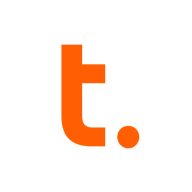

Teradata and OpenText Analytics Database (Vertica) are key players in the advanced analytics database sector. Teradata has the upper hand in handling large-scale data with its massively parallel processing, while Vertica excels in fast query processing and strong management tools.
Features: Teradata offers massively parallel processing, advanced workload management, and comprehensive security options. It handles large data volumes efficiently, crucial for real-time reporting. Vertica is known for its fast query processing, columnar database architecture, and robust management tools, supporting large data volumes and providing analytics extensions.
Room for Improvement: Teradata could improve its cloud offerings, support for unstructured data, and cost management. Future-proofing for multi-petabyte environments is a concern. Vertica could enhance workload management during peak load, documentation, and monitoring tools.
Ease of Deployment and Customer Service: Teradata is praised for its robust support ecosystem and architecture redundancy, yet initial deployments are perceived as complex. Vertica is valued for adaptable deployment options but has room for improvement in support integration and setup process. Overall, customer service for both products is positively rated.
Pricing and ROI: Teradata is perceived as expensive, yet offers a strong return on investment due to its capabilities. Its flexible pricing models cater to various budgets. Vertica, while costly, provides straightforward storage-based licensing, offering cost-effectiveness relative to its performance and storage capabilities.
At least fifteen to twenty percent of our time has been saved using Teradata, which has positively affected team productivity and business outcomes.
We have realized a return on investment, with a reduction of staff from 27 to eight, and our current return on investment is approximately 14%.
The customer support for Teradata has been great.
The technical support from Teradata is quite advanced.
Customer support is very good, rated eight out of ten under our essential agreement.
Whenever we need more resources, we can add that in Teradata, and when not needed, we can scale it down as well.
This expansion can occur without incurring downtime or taking systems offline.
Teradata's scalability is great; it's been awesome.
I find the stability to be almost a ten out of ten.
The workload management and software maturity provide a reliable system.
If the same thing were available in a web interface, that would be really helpful.
If Teradata could provide a list of certified experts, that would be fantastic.
Unlike SQL and Oracle, which have in-built replication capabilities, we don't have similar functionality with Teradata.
Initially, it may seem expensive compared to similar cloud databases, however, it offers significant value in performance, stability, and overall output once in use.
Teradata is much more expensive than SQL, which is well-performed and cheaper.
We spent roughly $295,000 on setup costs.
It has resulted in better performance improvement within our team as we now cover nine business units instead of 18, thanks to the data performance, which has increased data visibility and helped the enterprise achieve a higher rate of internal return on financials.
The first thing that I appreciate about Teradata is its multi-parallel processing. Whatever queries we execute on Teradata, they are blazingly fast, so it offers really fast connectivity.
The data mover is valuable over the last two years as it allows us to achieve data replication to our disaster recovery systems.
| Product | Market Share (%) |
|---|---|
| Teradata | 11.1% |
| OpenText Analytics Database (Vertica) | 6.4% |
| Other | 82.5% |


| Company Size | Count |
|---|---|
| Small Business | 29 |
| Midsize Enterprise | 23 |
| Large Enterprise | 38 |
| Company Size | Count |
|---|---|
| Small Business | 26 |
| Midsize Enterprise | 12 |
| Large Enterprise | 50 |
OpenText Analytics Database Vertica is known for its fast data loading and efficient query processing, providing scalability and user-friendliness with a low cost per TB. It supports large data volumes with OLAP, clustering, and parallel ingestion capabilities.
OpenText Analytics Database Vertica is designed to handle substantial data volumes with a focus on speed and efficient storage through its columnar architecture. It offers advanced performance features like workload isolation and compression, ensuring flexibility and high availability. The database is optimized for scalable data management, supporting data scientists and analysts with real-time reporting and analytics. Its architecture is built to facilitate hybrid deployments on-premises or within cloud environments, integrating seamlessly with business intelligence tools like Tableau. However, challenges such as improved transactional capabilities, optimized delete processes, and better real-time loading need addressing.
What features define OpenText Analytics Database Vertica?OpenText Analytics Database Vertica's implementation spans industries such as finance, healthcare, and telecommunications. It serves as a central data warehouse offering scalable management, high-speed processing, and geospatial functions. Companies benefit from its capacity to integrate machine learning and operational reporting, enhancing analytical capabilities.
Teradata is a powerful tool for handling substantial data volumes with its parallel processing architecture, supporting both cloud and on-premise environments efficiently. It offers impressive capabilities for fast query processing, data integration, and real-time reporting, making it suitable for diverse industrial applications.
Known for its robust parallel processing capabilities, Teradata effectively manages large datasets and provides adaptable deployment across cloud and on-premise setups. It enhances performance and scalability with features like advanced query tuning, workload management, and strong security. Users appreciate its ease of use and automation features which support real-time data reporting. The optimizer and intelligent partitioning help improve query speed and efficiency, while multi-temperature data management optimizes data handling.
What are the key features of Teradata?In the finance, retail, and government sectors, Teradata is employed for data warehousing, business intelligence, and analytical processing. It handles vast datasets for activities like customer behavior modeling and enterprise data integration. Supporting efficient reporting and analytics, Teradata enhances data storage and processing, whether deployed on-premise or on cloud platforms.
We monitor all Data Warehouse reviews to prevent fraudulent reviews and keep review quality high. We do not post reviews by company employees or direct competitors. We validate each review for authenticity via cross-reference with LinkedIn, and personal follow-up with the reviewer when necessary.